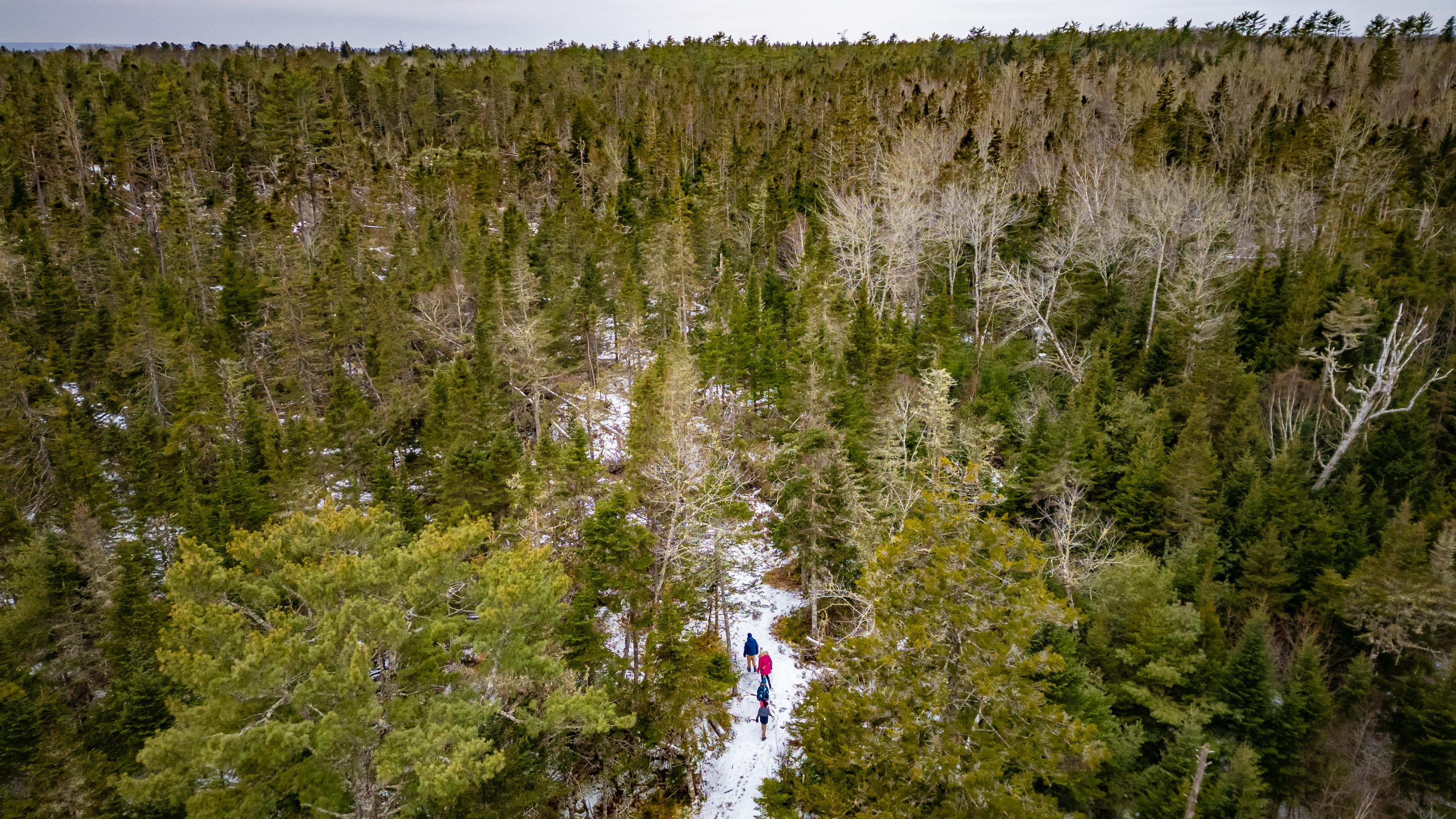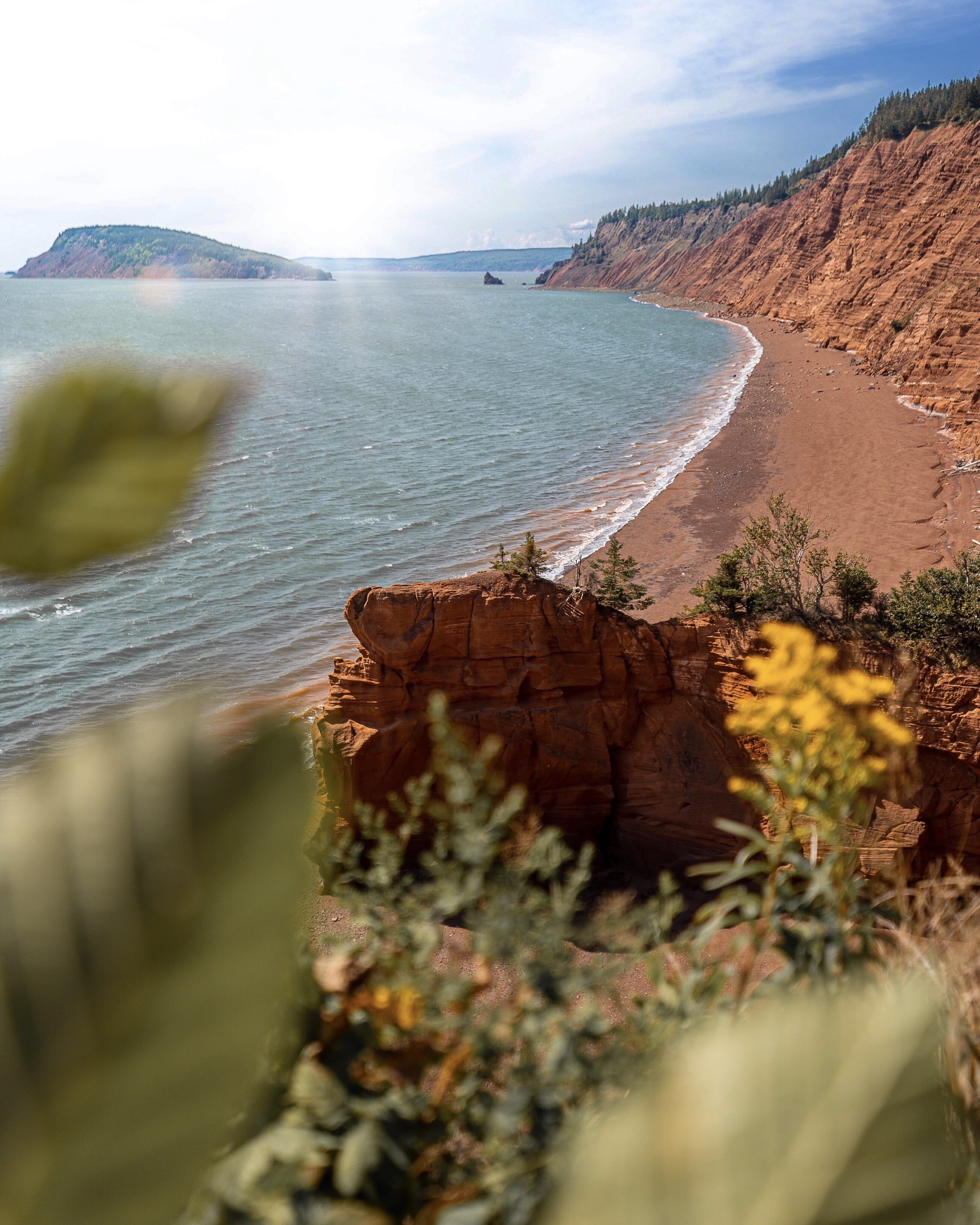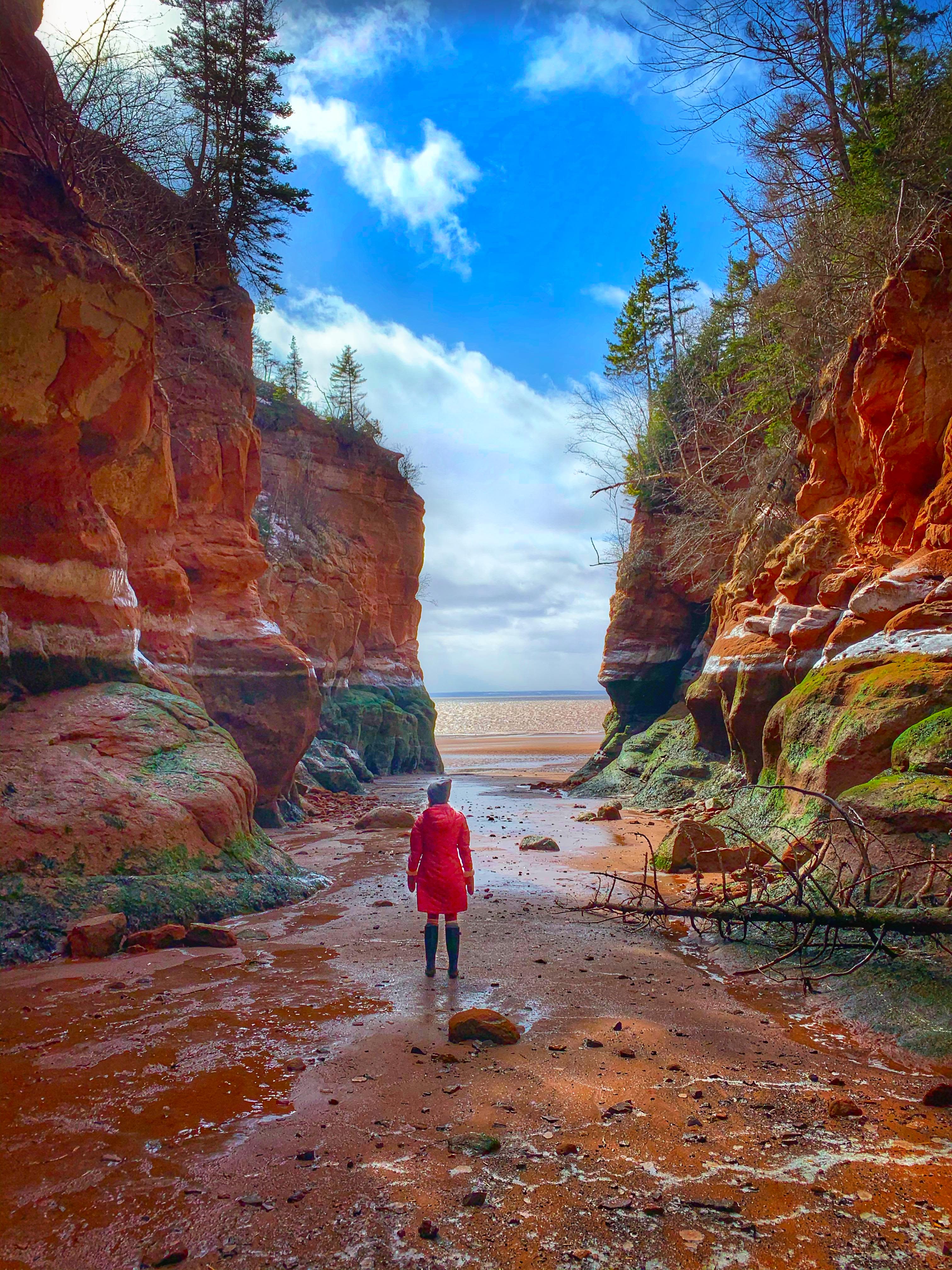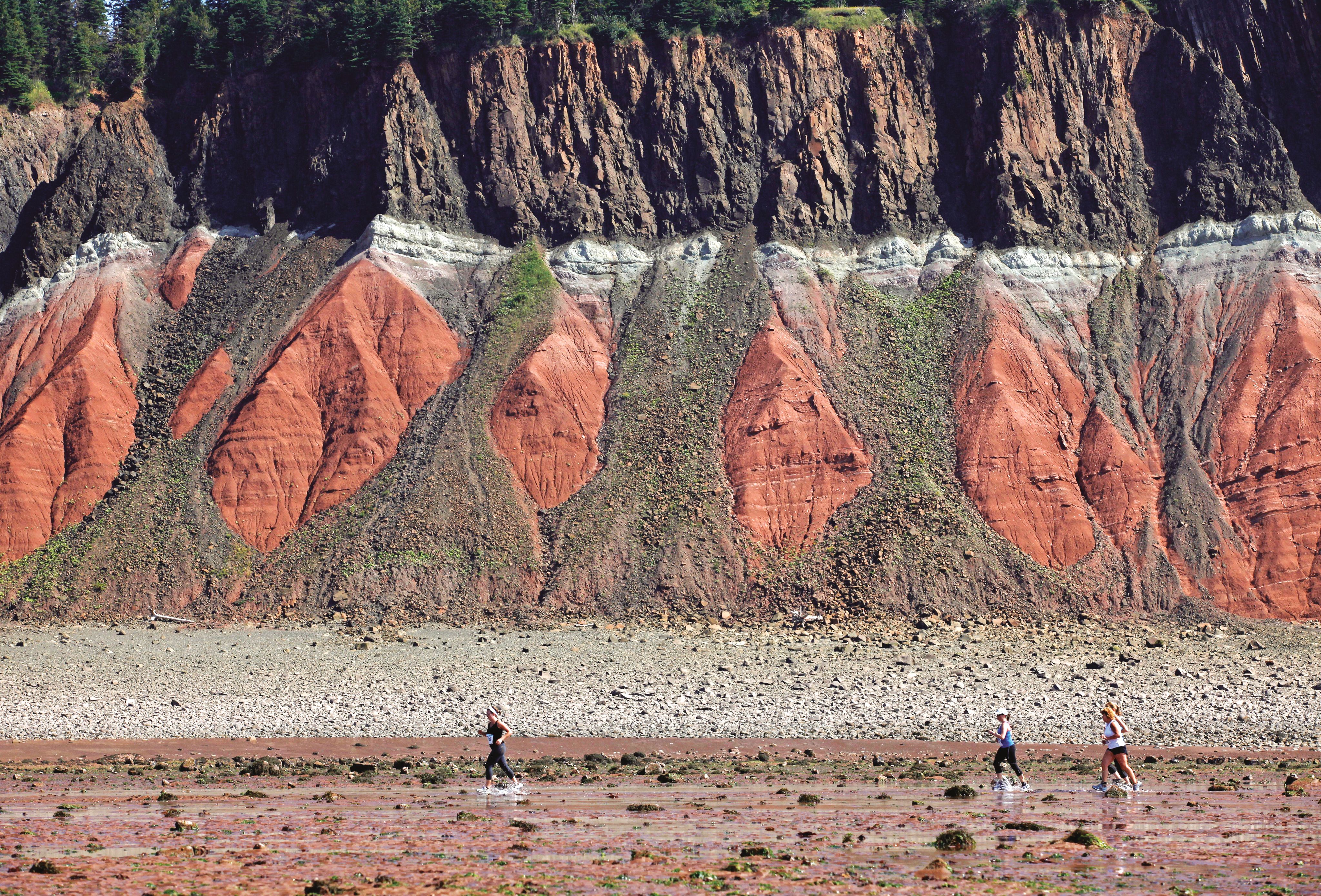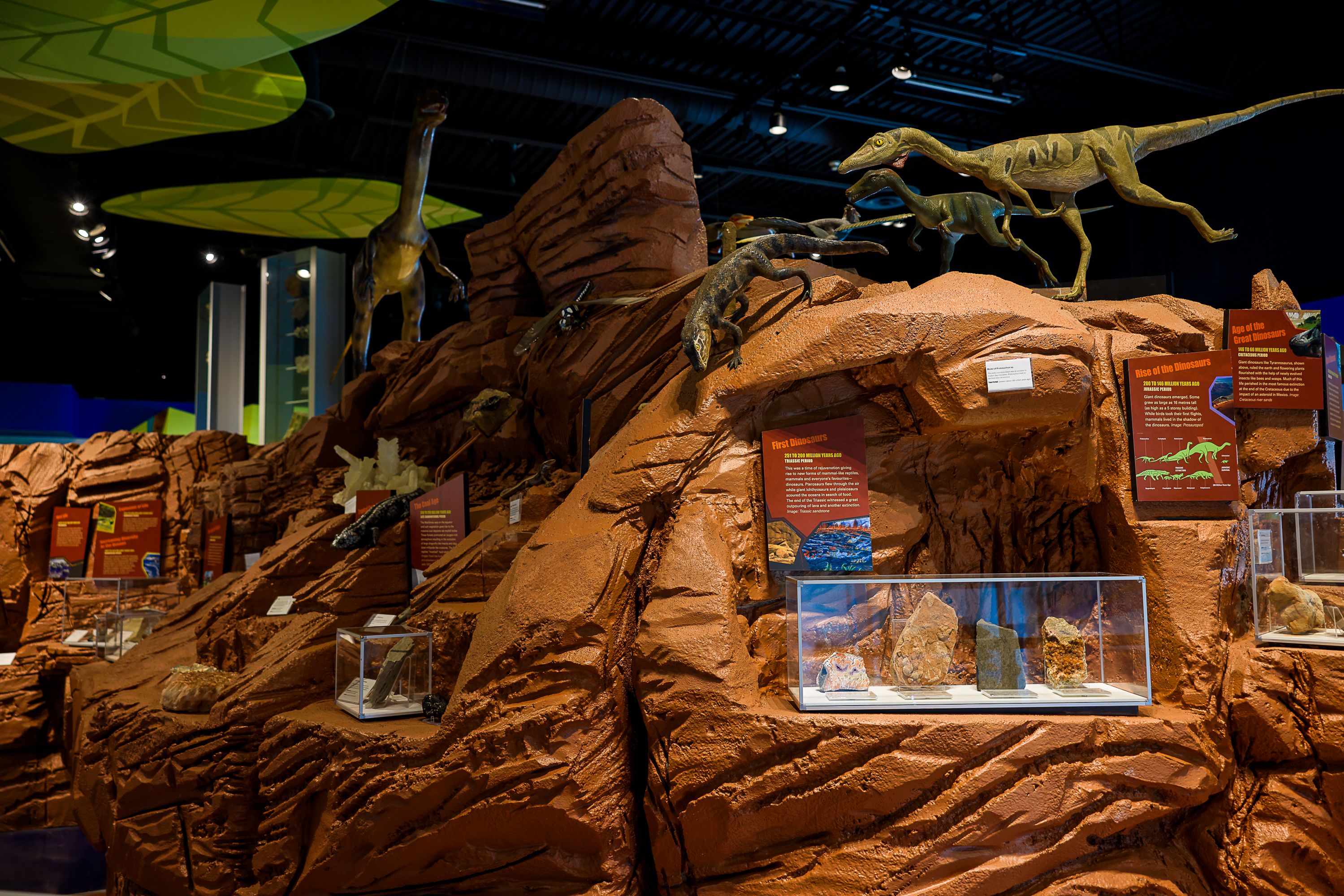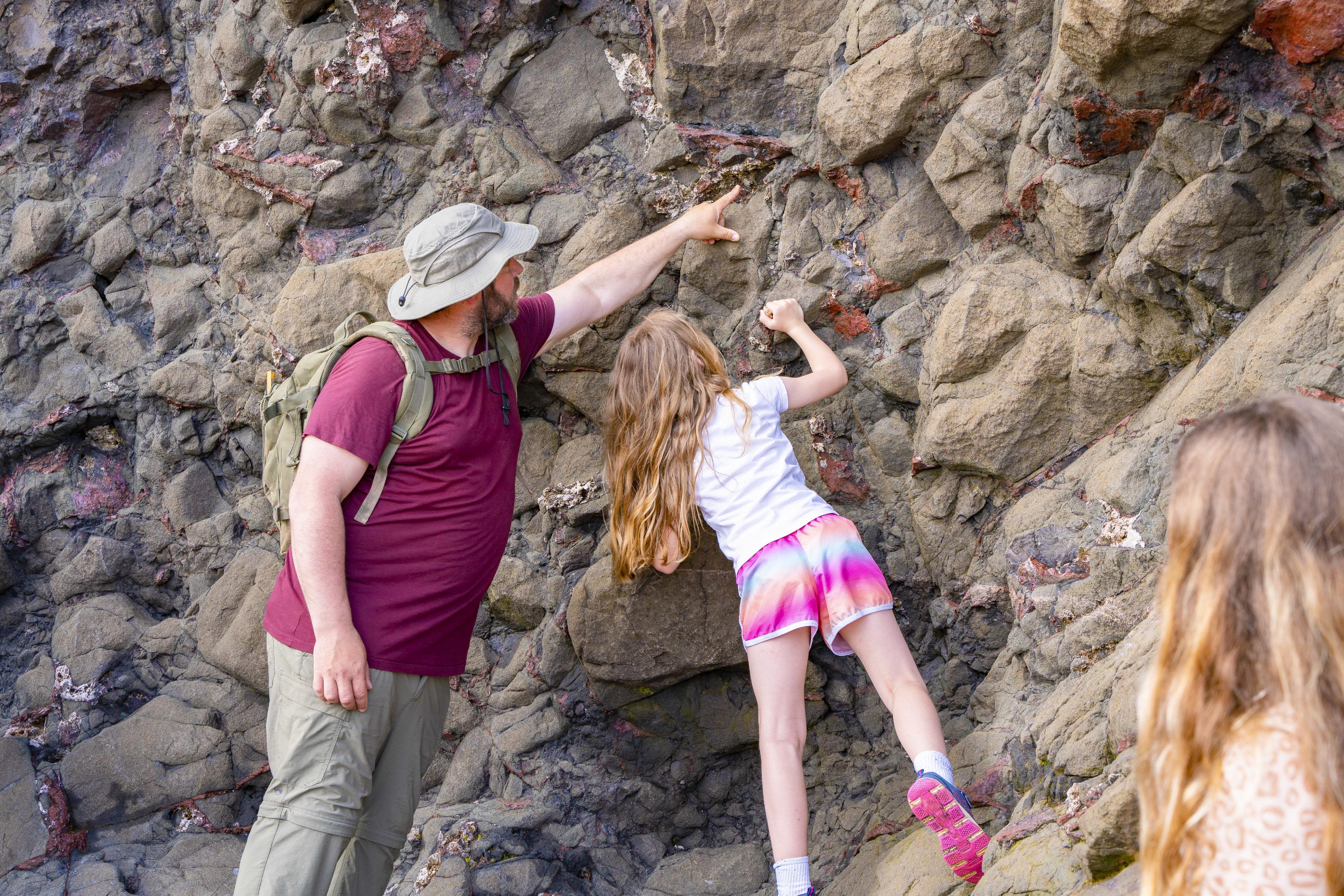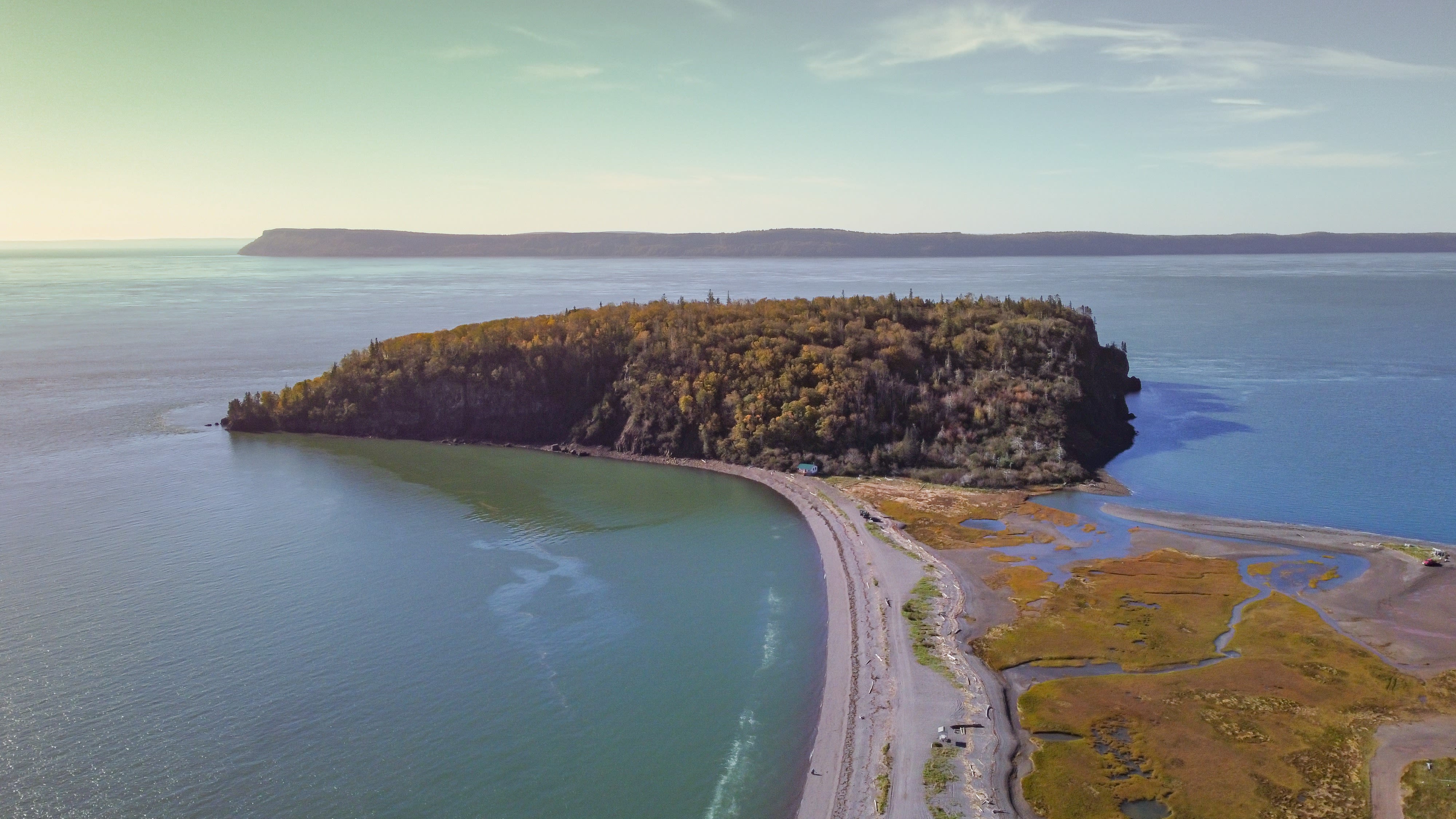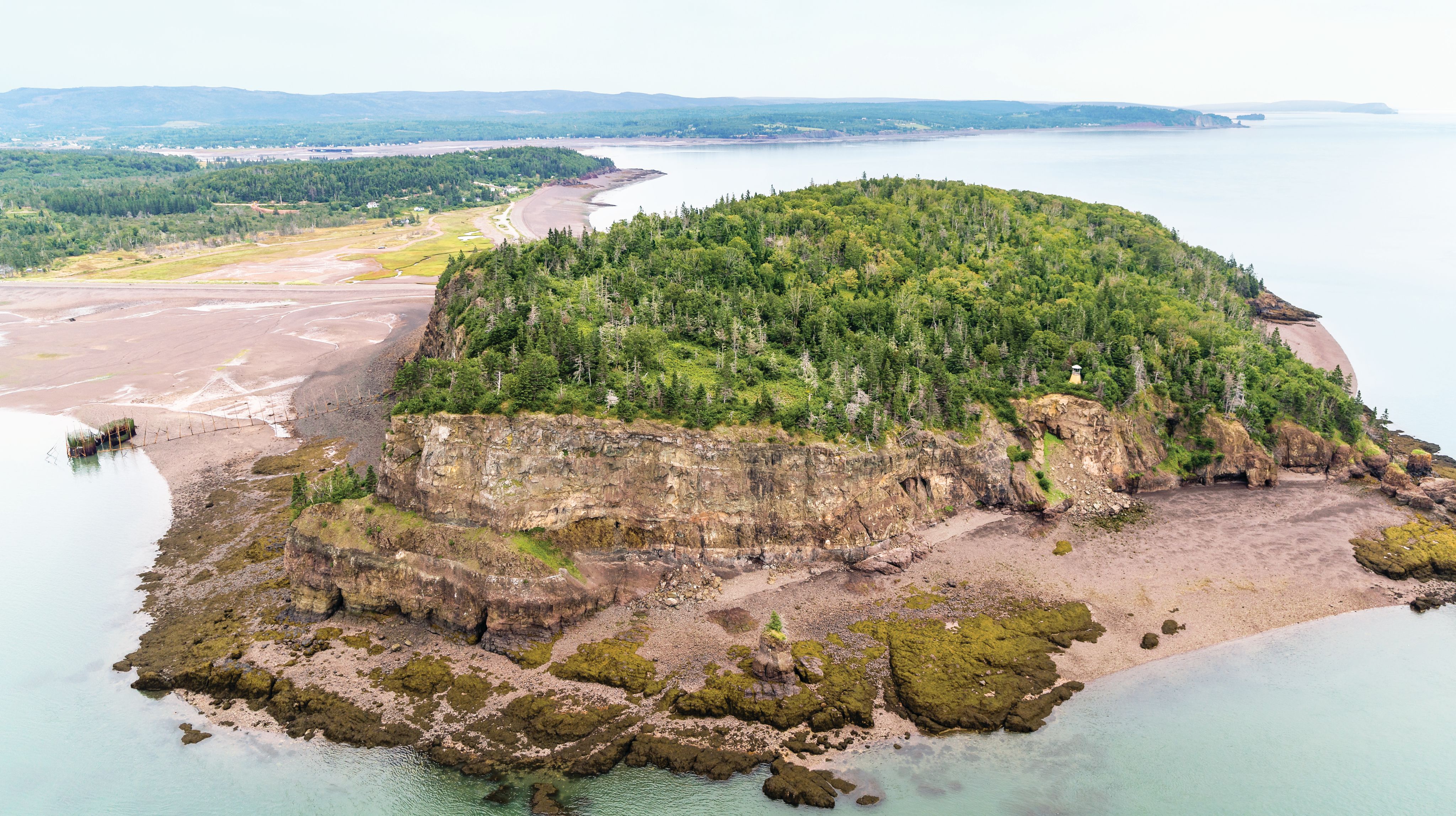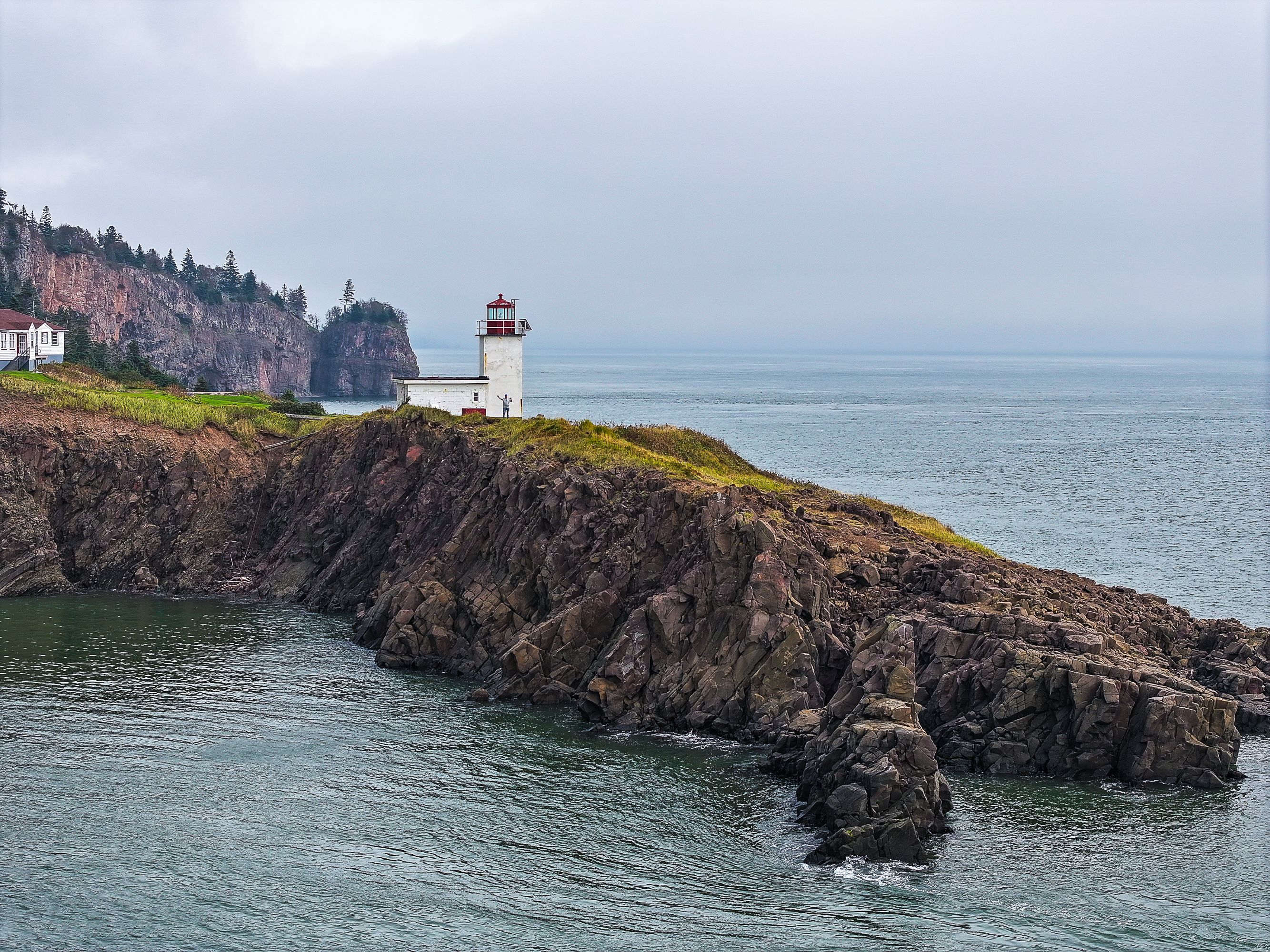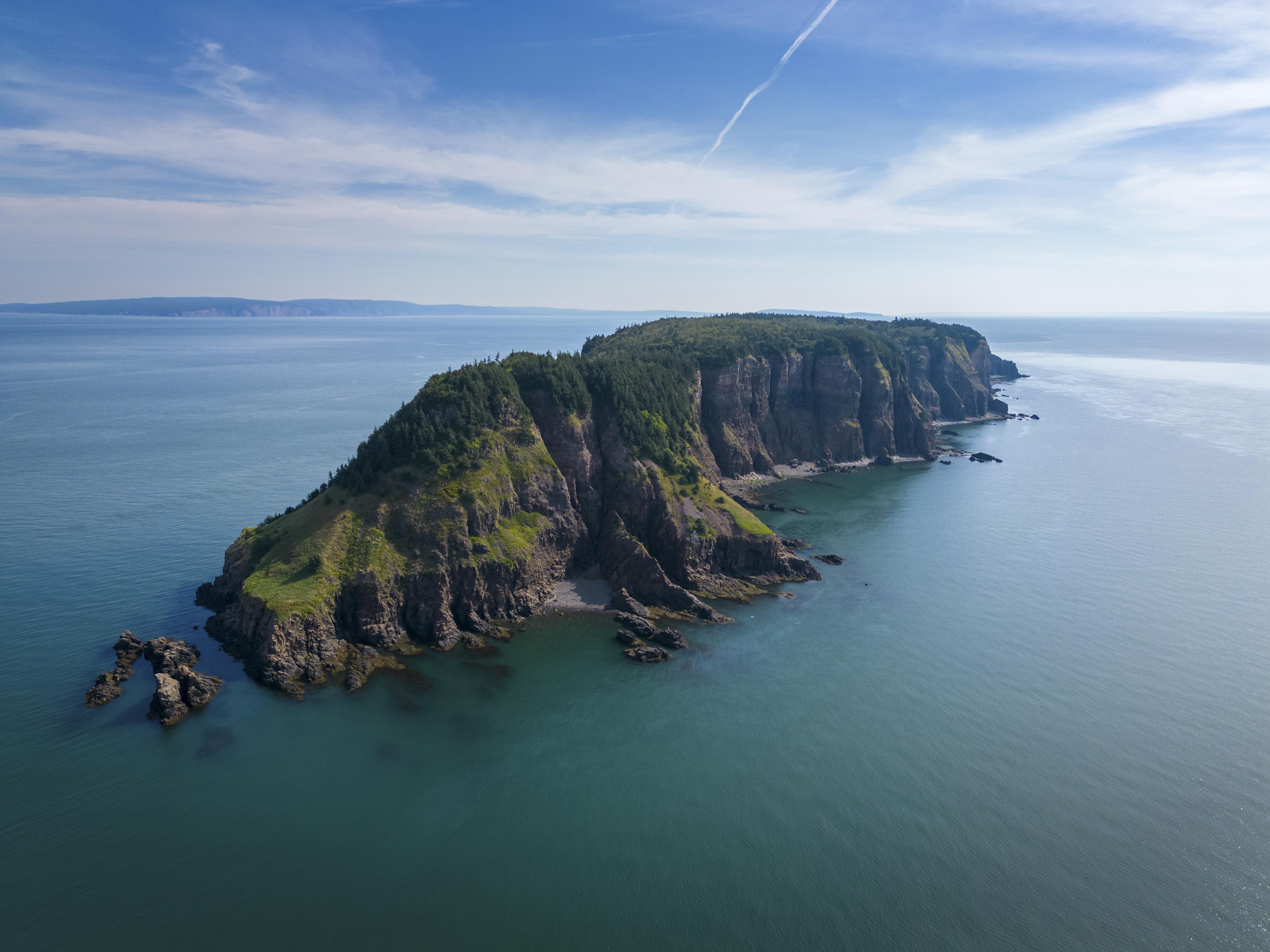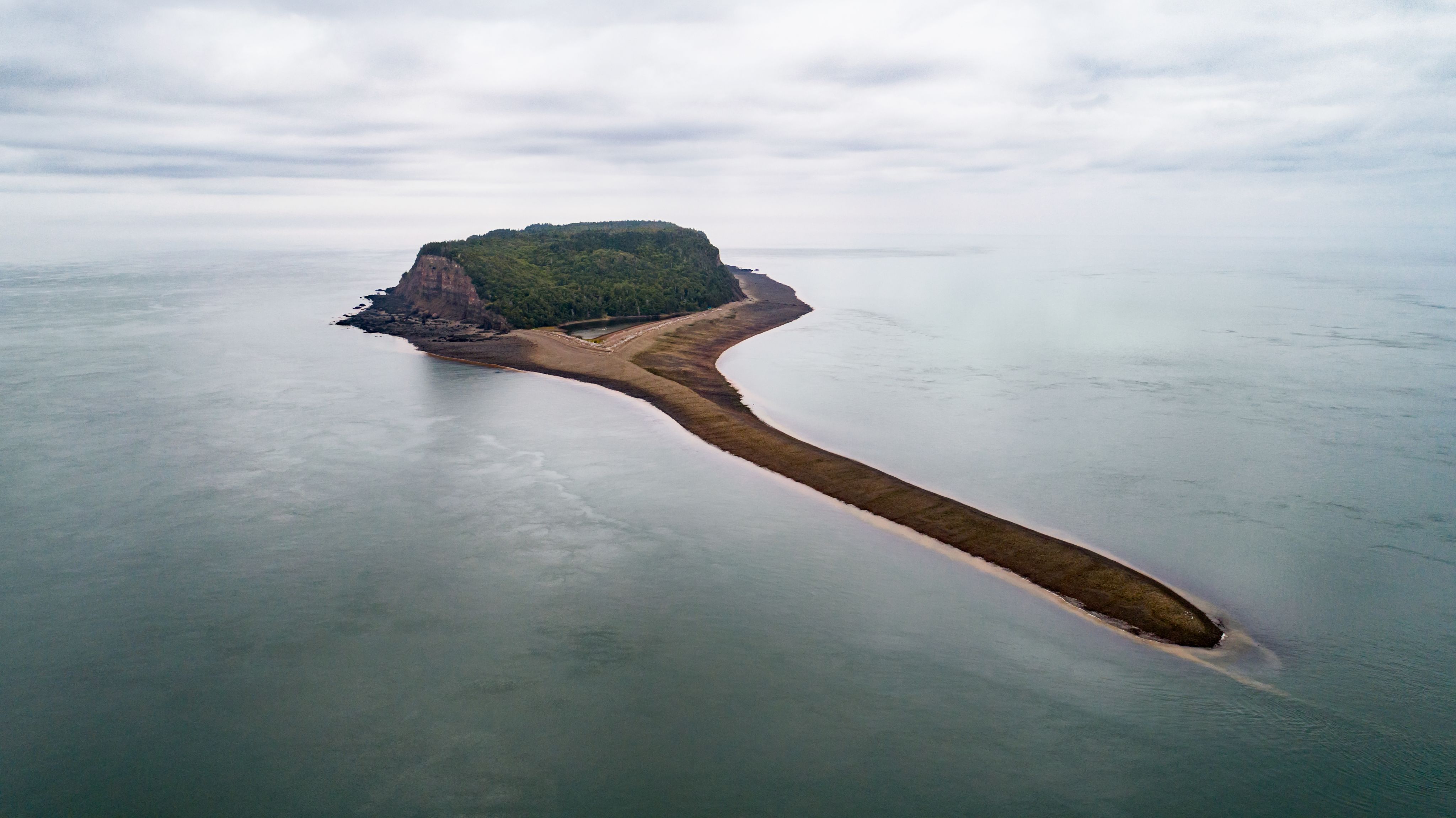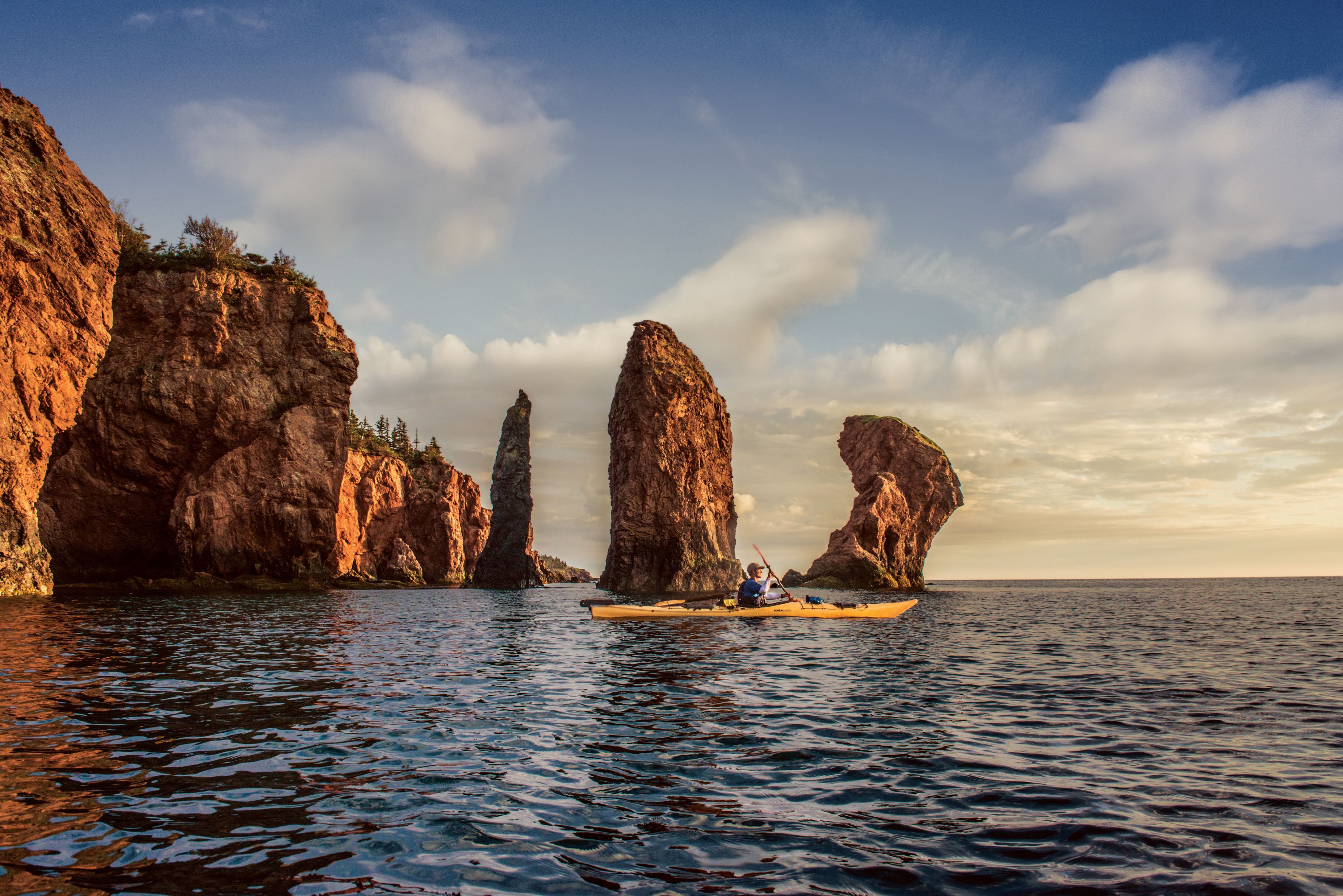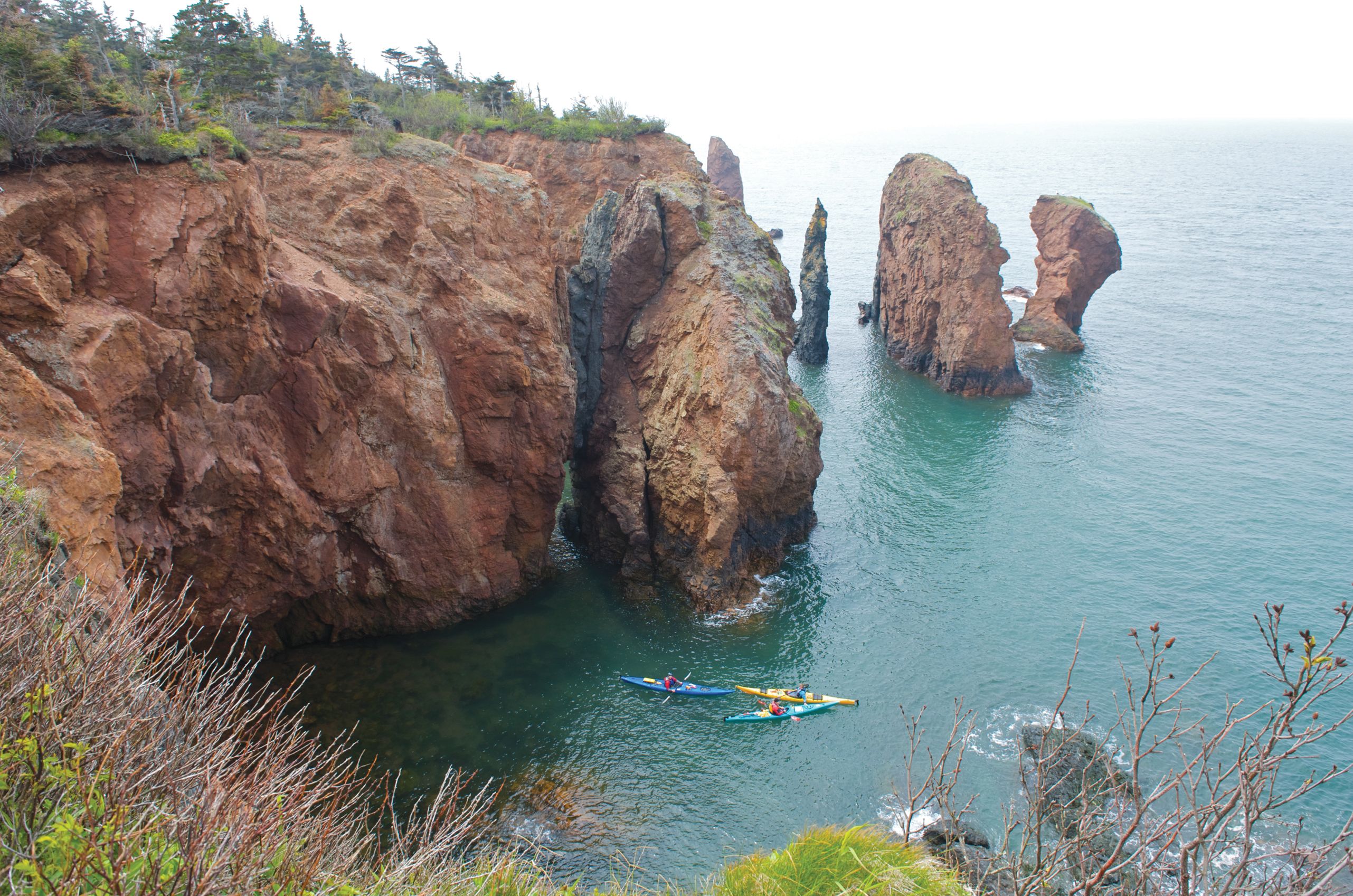A Journey Through Time
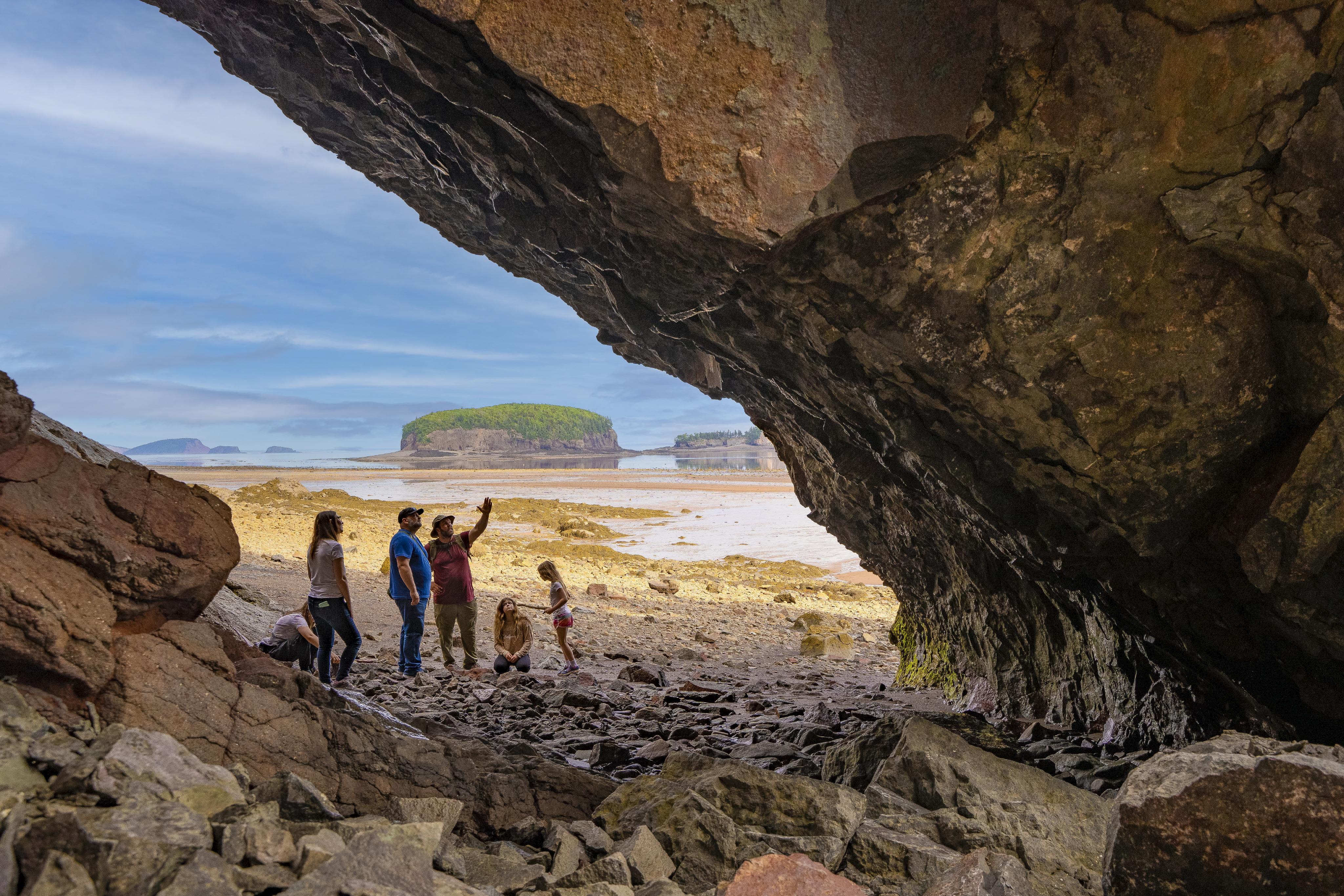
The Cliffs of Fundy UNESCO Global Geopark is a breathtaking testament to earth's ever-changing geological past.
Located along the Bay of Fundy in Nova Scotia, this rugged, windswept coastline tells a story that began more than 300 million years ago with the formation and eventual breakup of the supercontinent Pangea.
As tectonic forces pulled Pangea apart, the land that would become Nova Scotia drifted away from what is now Morocco, leaving behind a dramatic landscape shaped by volcanic activity, glacial movements, and the relentless power of the world’s highest tides.
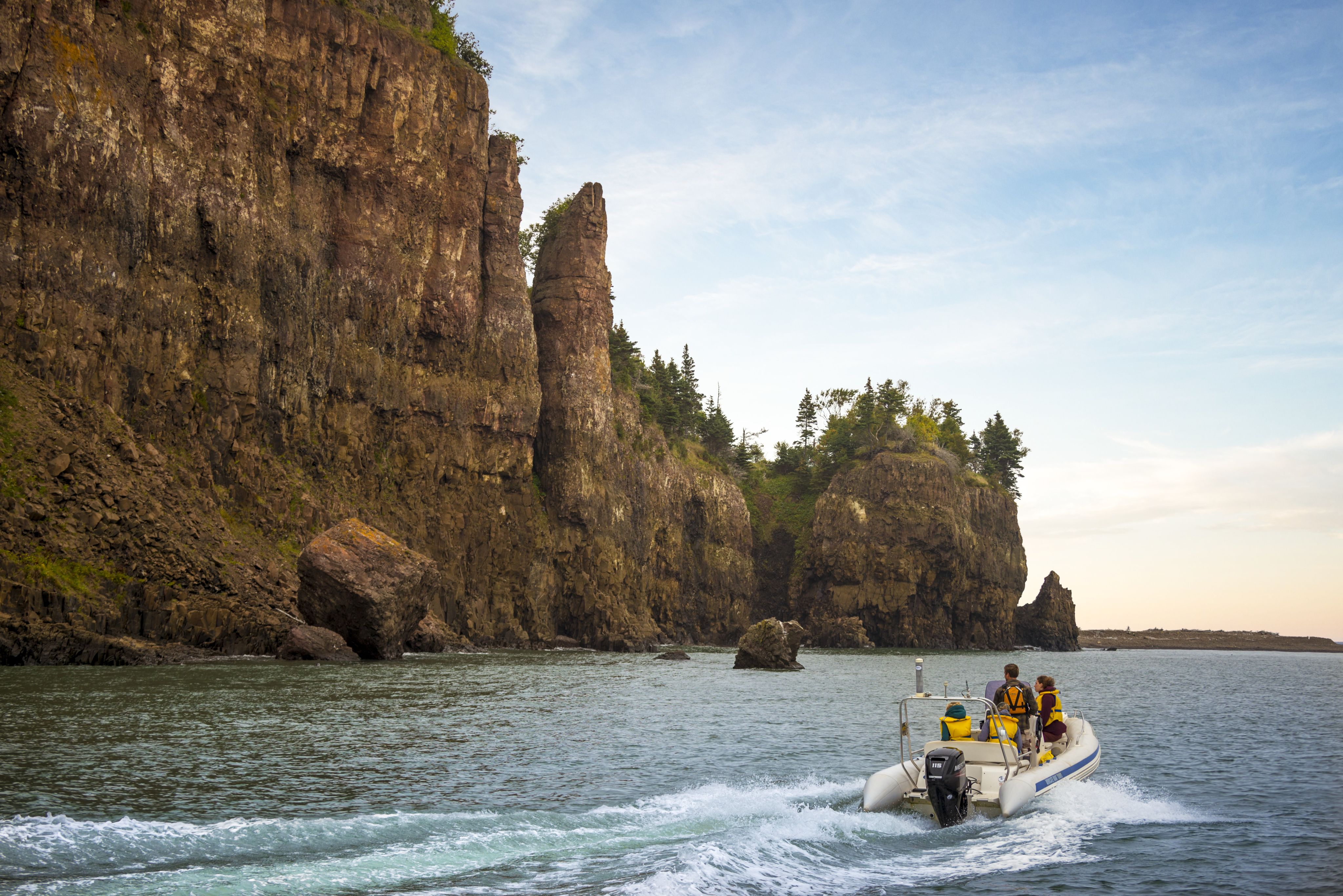
Today, visitors to the Cliffs of Fundy Geopark can witness this deep geological history while experiencing stunning natural beauty, rich Mi’kmaq cultural heritage, and unparalleled outdoor adventure.
The Geopark offers a rare opportunity to walk in the footsteps of ancient creatures, explore rock formations that tell the story of Earth’s dynamic past, and become immersed in Indigenous traditions that have been part of this land for millennia.
Whether hiking along rugged coastal trails, discovering fossils embedded in towering cliffs, or listening to Mi’kmaq stories that explain the land’s spiritual significance, every experience here is a journey through time.
The Cliffs of Fundy UNESCO Global Geopark is located on the north shore of the Minas Basin in Nova Scotia. It spans 165 km and includes dozens of geosites that help tell this 300-million-year history.
You could easily spend several days exploring not only the geosites but also the welcoming communities tucked alongside them.
Here are some of the not-to-be-missed locations:
Truro
Tourism Nova Scotia / Photographer: Acorn Art & Photography
Tourism Nova Scotia / Photographer: Acorn Art & Photography
Begin your exploration of the Cliffs of Fundy by experiencing the power of the tides. In Truro, visit the Salmon River (you have to time your visit to the tide schedule) to see the tidal bore, a natural phenomenon where the strength of incoming tides pushes a wave up the river.
While in the area, visit downtown Truro for great local shops and restaurants. You can't go wrong with a stop at the Nook & Cranny Brewpub.
Mi'kmawey Derbert National Historic Site
Photo: Tourism Nova Scotia / Photographer: Acorn Art and Photography
Photo: Tourism Nova Scotia / Photographer: Acorn Art and Photography
The Mi'kmawey Derbert National Historic Site is one of the most significant archaeological areas in the country. Artifacts dating back nearly 13,500 years have been uncovered here, making it one of the earliest known human settlements in North America.
Walk the interpretive trail to feel the significance of this monumental area. It is the future home of the Mi'kmawey Debert Cultural Centre.
Thomas Cove Coastal Reserve
Tourism Nova Scotia / Photographer: @daveyandsky
Tourism Nova Scotia / Photographer: @daveyandsky
Beautiful year round, the Thomas Cove Coastal Reserve trails are a must-see when visiting the Cliffs of Fundy.
Thomas Cove has excellent examples of rocks from the Late Triassic period (approximately 220 million years ago), as well a woodlands and tidal creeks. The trails lead to the open water where you can see views of the Bay of Five Islands and Cape Split.
Five Islands Provincial Park
Tourism Nova Scotia / Photographer: Chuck Wrathall (@chuckwrathall)
Tourism Nova Scotia / Photographer: Chuck Wrathall (@chuckwrathall)
Located just east of Parrsboro, the Five Islands Provincial Park has stunning 300-foot sea cliffs overlooking the Minas Basin. The park offers camping sites if you are looking to overnight, but it is also a wonderful stop for a hike or a paddle. Beachcombing, rock collecting, and clam digging are also popular activities
The Red Head Trail takes you to sand dunes blown by the arid winds of the Fundy rift valley during the Dinosaur era, now preserved in sandstone.
Tourism Nova Scotia / Photographer @katsteele86
Tourism Nova Scotia / Photographer @katsteele86
Be sure to visit Old Wife, one of the best places to see the breakup of Pangea.
According to the Cliffs of Fundy Geopark:
"As Pangea ripped apart, the greatest outpouring of lava in Earth's history gave rise to one of the Five (or Six) mass extinction events in the history of Life, wiping out the competitors of the dinosaurs and ushering in the true reign of the famous reptiles. The dark rocks are basalt–cooled lava, and the red rocks below are the sediments swept by rivers and winds in the rift valley."
Photo: Tourism Nova Scotia
Photo: Tourism Nova Scotia
Parrsboro
Photo: Tourism Nova Scotia/Patrick Rojo
Photo: Tourism Nova Scotia/Patrick Rojo
The community of Parrsboro enjoys a beautiful location on the Bay of Fundy. Stop at the welcoming community for lunch or stay overnight.
In the summer, catch a show at the Ship's Company Theatre, an award-winning theatre on the Parrsboro harbour.
For a taste of local flavour, try Two Islands Brewing, a small batch craft brewery.
And to gain an understanding of the incredible power potential of the tides, stop at the FORCE visitor centre and learn about how this area is researching and testing marine renewable technology.
Fundy Geological Museum
Located in Parrsboro is the Fundy Geological Museum, a worthy stop on your Cliffs of Fundy road trip.
The museum has dynamic exhibits, engaging staff and many hands-on activities that bring millions of years of history to life.
Photo: Tourism Nova Scotia/W Andrew Powell
Photo: Tourism Nova Scotia/W Andrew Powell
Wasson Bluff
Photo: Tourism Nova Scotia/Nova Social Media and Marketing
Photo: Tourism Nova Scotia/Nova Social Media and Marketing
From the Fundy Geological Museum, it is just 9 km drive to get to Wasson Bluff. Staff at the museum offer guided tours to this protected area, and it is worth going with a guide to get the most out of this stop.
Wasson Bluff is one of Canada's most significant fossil sites. Palaeontologists have found a plethora of fossils here from dinosaurs that lived in the early Jurassic period. Thousands of fossils have been found here, including tiny dinosaur footprints, and more continue to be exposed through the action of the tides.
Aside from the incredible fossils, the geological history of the cliffs, which form the edge of the ancient rift that was created when Pangea broke apart, is incredible to see.
Partridge Island
Tourism Nova Scotia / Photographer: Acorn Art & Photography
Tourism Nova Scotia / Photographer: Acorn Art & Photography
Although not technically an island as it is connected to the mainland of Nova Scotia by a sandbar, Partridge Island is a significant site culturally and geologically.
It is comprised of ancient sandstone and basalt cliffs that, like much of this region, have been continuously eroded by the powerful tides to reveal artifacts, fossils and gemstones.
Photo: Tourism Nova Scotia
Photo: Tourism Nova Scotia
Partridge Island is a sacred site to the Mi'kmaq, who call it Wa'so'q, which translates to heaven. Click on the video below to learn about the stories and legends that surround this location:
A 3-km hiking trail around the island will take you up to 200-foot cliffs overlooking the sea with dramatic views to nearby Cape Split and Cape d'Or.
Cape d'Or
Tourism Nova Scotia / Photographer: W Andrew Powell
Tourism Nova Scotia / Photographer: W Andrew Powell
Enjoy panoramic views over the Bay of Fundy from the cliffs of Cape d'Or, one of the best places to observe the powerful tidal currents.
The prominent basalt cliffs of Cape d'Or date back to the late Triassic period. Historic copper mines can still be seen in this area, which was known for its copper deposits for millennia.
Tourism Nova Scotia / Photographer: Chuck Wrathall (@chuckwrathall)
Tourism Nova Scotia / Photographer: Chuck Wrathall (@chuckwrathall)
Isle Haute
Tourism Nova Scotia / Photographer: Chris MacFarlane
Tourism Nova Scotia / Photographer: Chris MacFarlane
A sancturary for sea birds and seals, Isle Haute sits 8 km off Cape Chignecto in the Bay of Fundy. It can only be accessed by boat for day use, but is best seen from the water so as not to disturb the wildlife.
The balsat cliffs tower 100 metres over the water, dating back to the late Triassic-early Jurassic period, about 200 million years ago.
Tourism Nova Scotia / Photographer: Patrick Rojo
Tourism Nova Scotia / Photographer: Patrick Rojo
Three sisters
Tourism Nova Scotia / Photographer: Scott Munn
Tourism Nova Scotia / Photographer: Scott Munn
The most prominent feature of Cape Chignecto are the sea stacks, remnants of lava flows and magma intrusions from deep within the earth.
The name Three Sisters comes from a Mi'kmaw legend in which three sisters were turned to stone.
Sea kayaking is very popular in the area, although the sea stacks can also be observed from land.
Photo: Tourism Nova Scotia
Photo: Tourism Nova Scotia
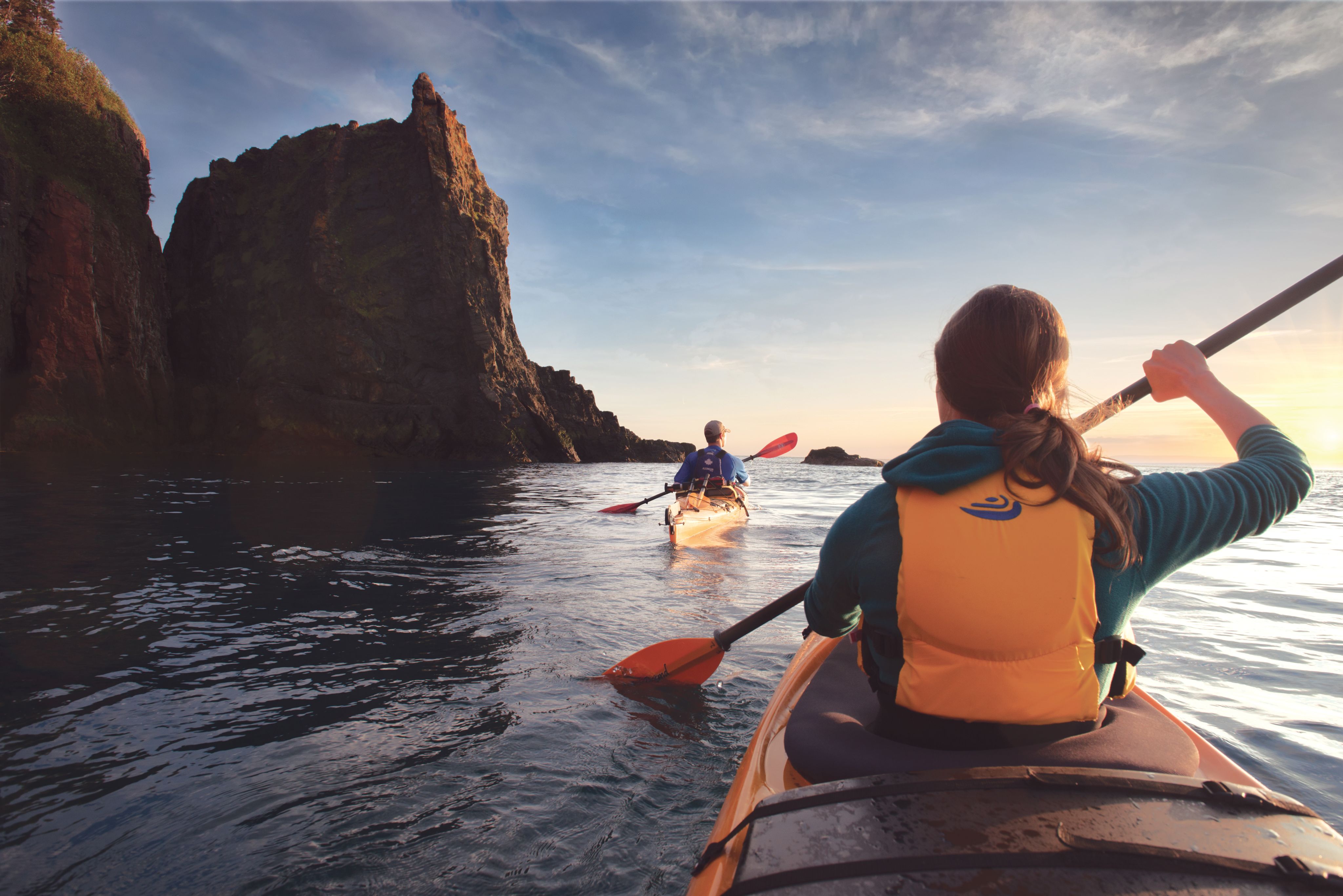
From towering cliffs and fossil-rich shores to vibrant cultural heritage and thrilling outdoor adventures, the Cliffs of Fundy offer an unforgettable experience for travellers seeking both natural wonder and historical depth.
This extraordinary landscape continues to inspire and captivate all who explore its rugged beauty.

Canada. Crafted by Canadians.



